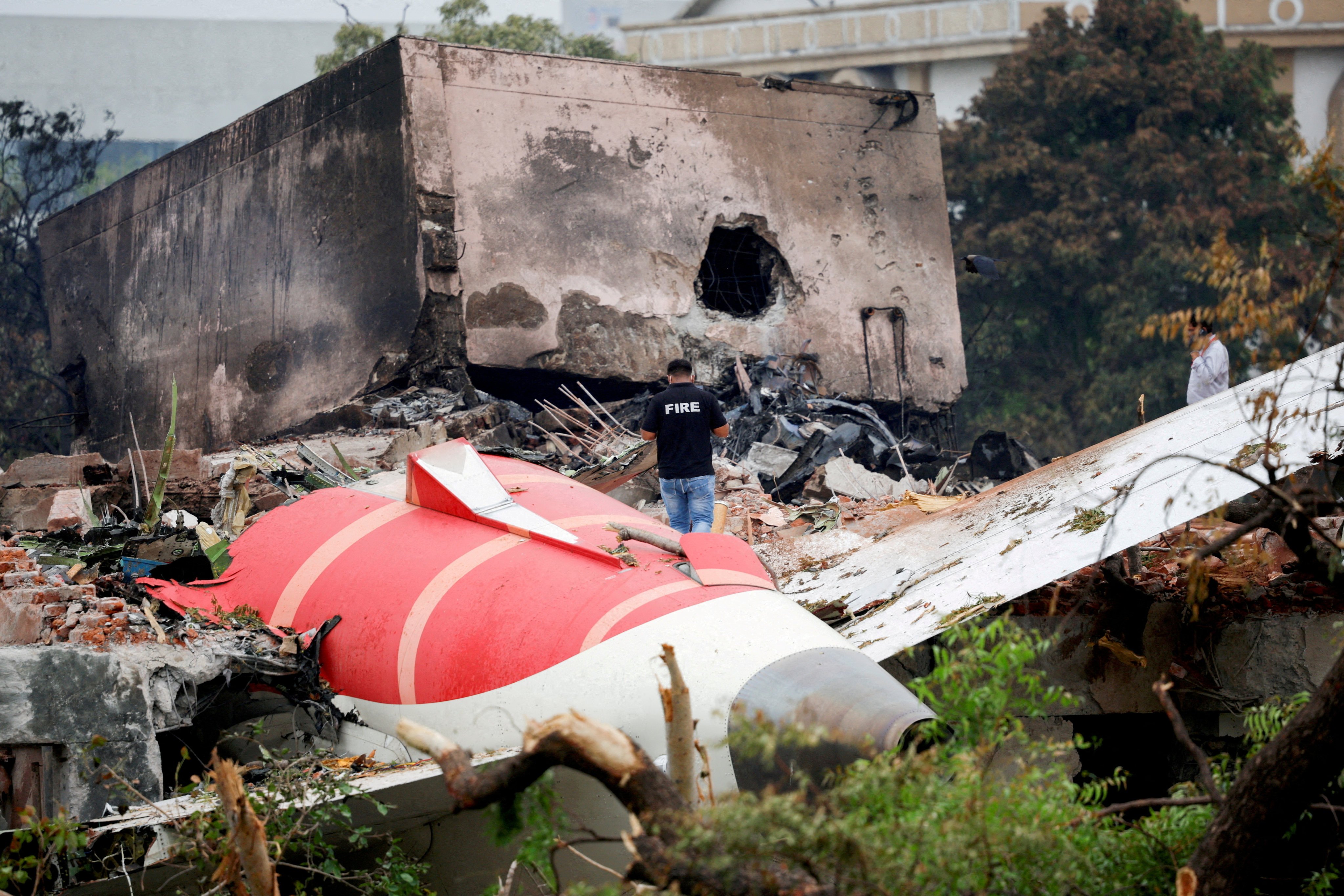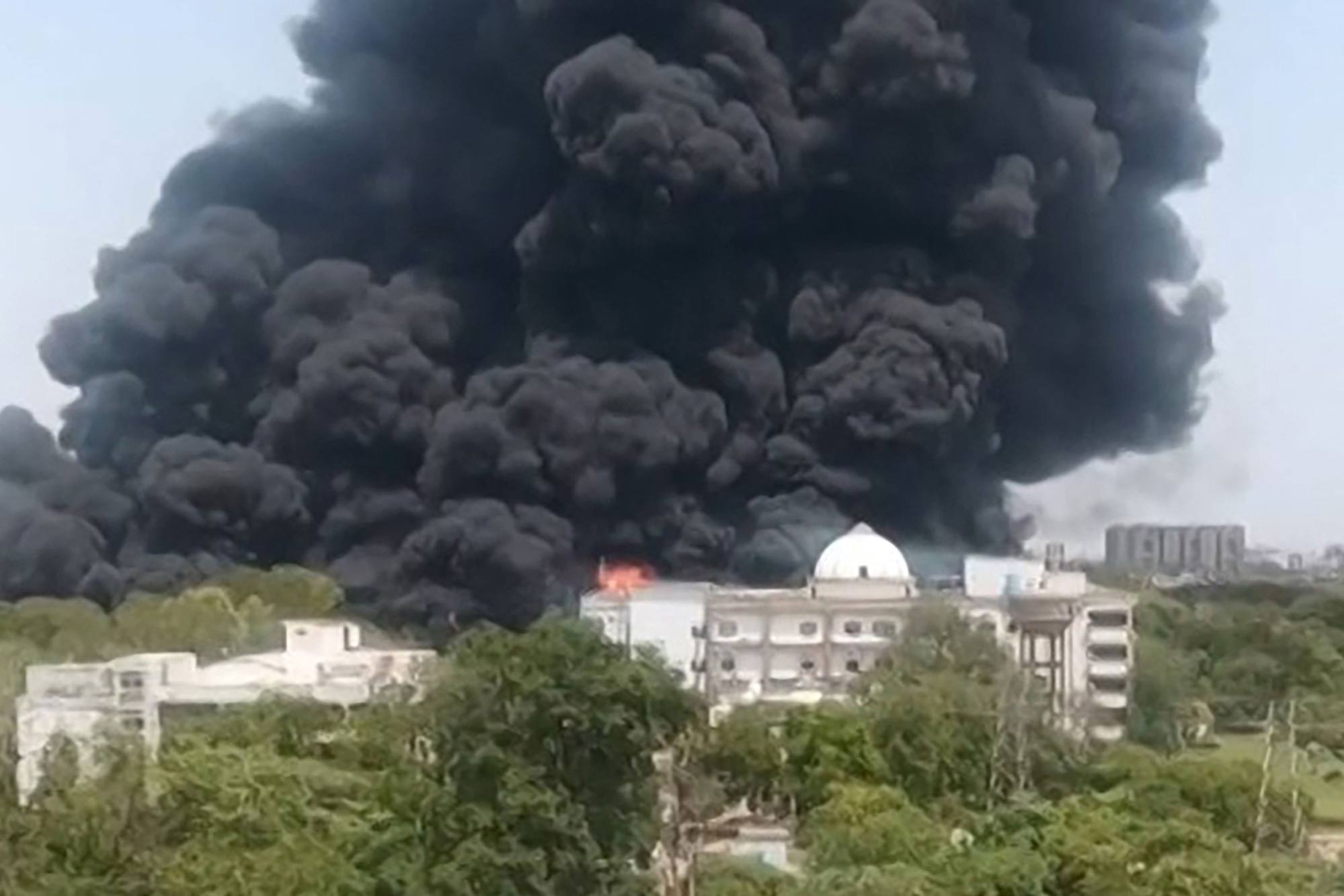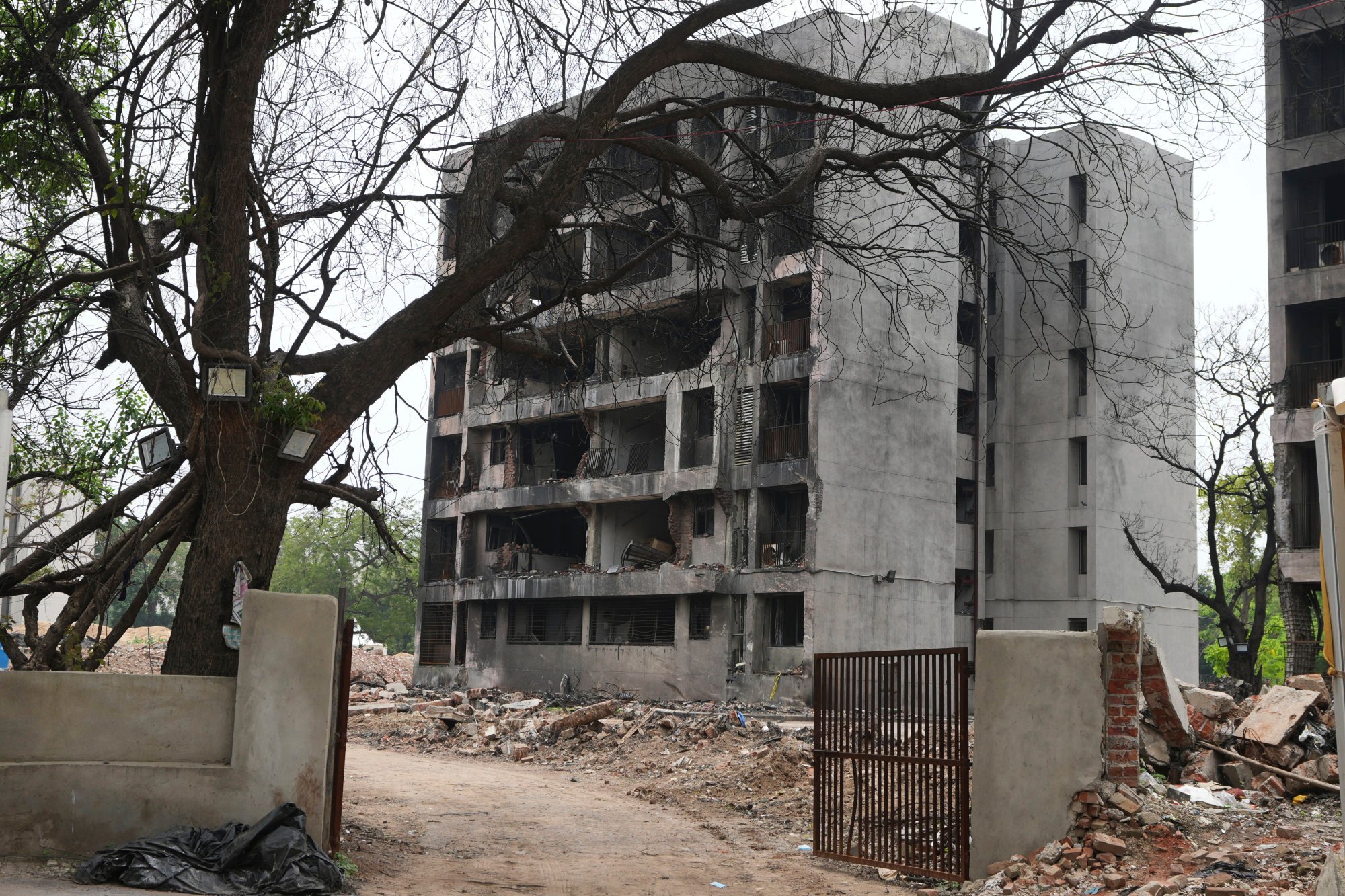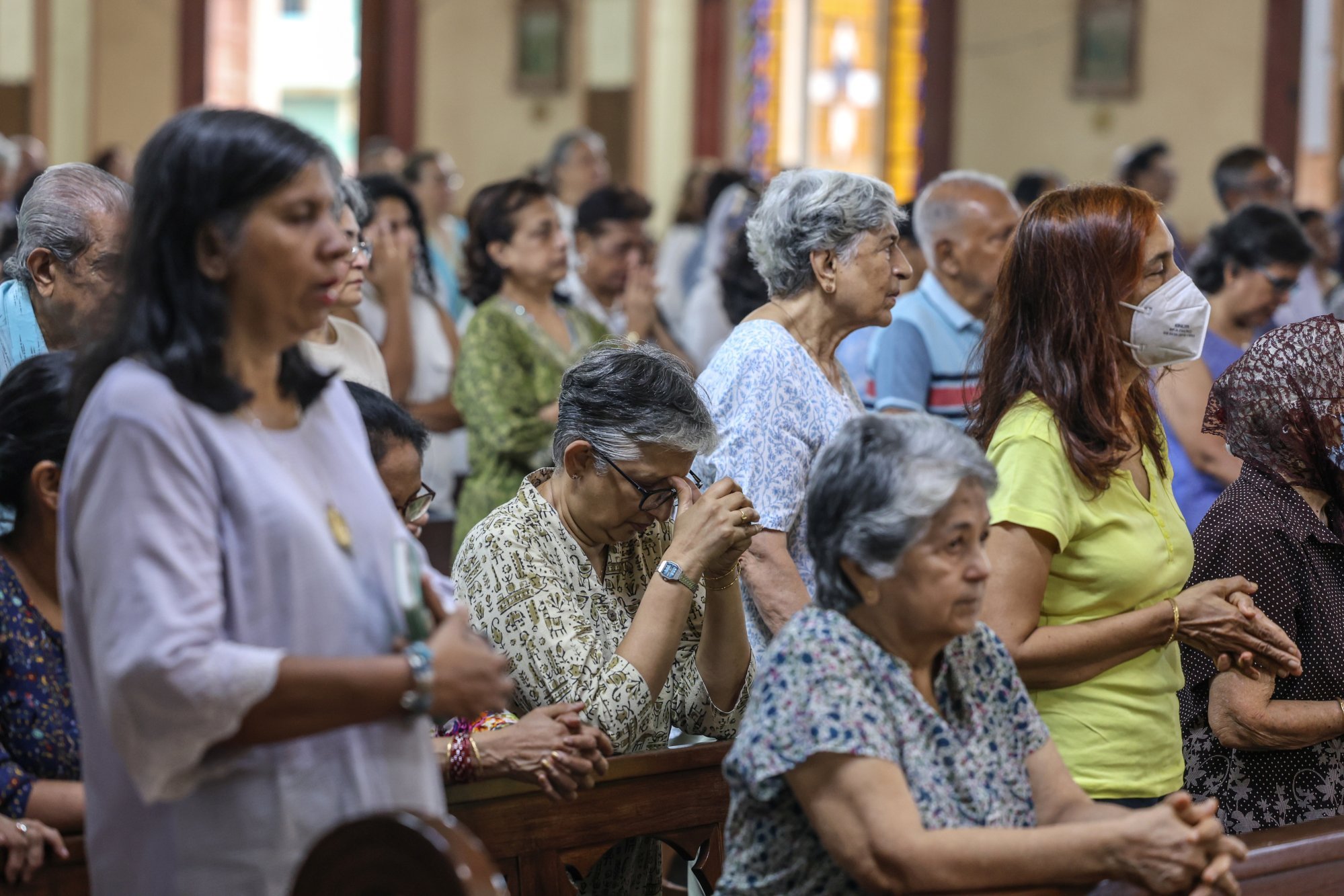‘We want transparency’: pilots warn against blaming crew in Air India crash
As investigators hint at human error in last month’s Air India tragedy, pilot associations are pushing back

An initial probe into last month’s deadly Air India crash has raised alarm among pilot groups, who warn that preliminary findings hinting at human error are premature and risk unfairly blaming the flight crew before the investigation is complete.
A report by India’s Air Accident Investigation Bureau (AAIB), released on Friday, found that fuel supply to the aircraft’s engines was abruptly cut off just after take-off on June 12, moments before the Boeing 787 Dreamliner crashed into a college hostel in Ahmedabad, killing 241 of the 242 people on board and 19 on the ground.
The findings, based on cockpit voice recordings, captured an exchange in which one pilot asked, “Why did you cut off?” and the other replied, “I didn’t.”
On the Boeing 787 – the model involved in the crash – the fuel cut-off switches are located between the pilots’ seats, just behind the throttle levers, and are designed with a locking mechanism to prevent accidental activation.
Despite this, the recorded exchange has sparked speculation over whether the fuel was shut off deliberately or by mistake, prompting strong objections from pilot associations.

The Airline Pilots Association of India (ALPA) told local media on Sunday it was considering legal action to secure representation in the investigative process, alleging that the preliminary report demonstrated a bias towards pilot error.
“We want transparency. We had asked for our representation in the investigation panel,” ALPA-India President Sam Thomas told the Press Trust of India, saying that they could contribute meaningfully because of their domain expertise.
The Indian Commercial Pilots’ Association warned against drawing hasty conclusions.
“The crew has acted in line with their training and responsibilities under challenging conditions, and the pilots should not be vilified based on conjecture. Until the official investigation is concluded and the final report is published, any speculation is unacceptable and must be condemned,” an association statement said.
Air India CEO Campbell Wilson also cautioned in an internal memo against “premature conclusions”, saying the probe was “far from over” and the airline was open to further inquiries, according to Reuters.
During the plane’s last moments, First Officer Clive Kunder, with about 1,100 flight hours as a 787 co-pilot, was at the control while Sumeet Sabharwal, a more experienced and senior cockpit occupant in command, was the pilot monitoring the flight.
It is unclear what might have prompted the fuel supply cut or identify who said what.
“It is highly unlikely that any pilot, especially during take-off, would want to meddle or fiddle around with switches behind the thrust levels. At best, you’d focus on raising the landing gear, which is located on the front panel of the cockpit, or raise the flaps,” said Mark D Martin, CEO of aviation consultancy Martin Consulting.
Unhandled type: inline-plus-widget {“type”:”inline-plus-widget”}
“The reason why the fuel valves/switch was turned back to CUTOFF is something that needs to be investigated,” he said in written comments.

It was the first crash for the Dreamliner, which began flying commercially in 2011, according to the Aviation Safety Network database. The ill-fated plane that crashed last month flew for the first time in 2013 and was delivered to Air India a year later, according to flight-tracking website Flightradar24.
One television channel showed the plane taking off over a residential area and then disappearing from the screen before a huge jet of fire could be seen rising into the sky from beyond the houses.
There are indications that the fuel valves/switches can go faulty, according to the United States Federal Aviation Administration, which in 2018 issued an Airworthiness Information Bulletin citing reported events surrounding the fuel switch having moved by itself to cut-off position with several airlines, according to Martin.
“This, in my view, is most likely the cause if the switch is proven faulty,” he said. “No pilot would be stupid to cut fuel to both engines during a phase when he needs engine power the most.”
He urged that it was imperative to wait for the comprehensive investigation report to determine whether the fuel switches moved automatically to cut-off position. “Then airlines that operate the [Boeing] 787 today need to review and investigate potential Fuel Switch Runaway with their aircraft,” he added.
The US National Transportation Safety Board, India’s AAIB and Directorate General of Civil Aviation, the UK’s Civil Aviation Authority and the European Union Aviation Safety Agency should undertake a deep investigation, he said.
“This will be a complex crash to investigate,” he said, urging that no stone should be left unturned. “It is imperative that this investigation is taken into the global quorum,” he said, adding that even the International Civil Aviation Organisation and other safety oversight regulators should be involved.
Questions unanswered
Other experts said the preliminary report had too many questions left unanswered.
“I understand it is a preliminary report but the insights are quite confusing and surprising, more so about why were the fuel switches cut off,” said Shantanu Gangakhedkar, senior consultant for aerospace and defence at Frost & Sullivan, noting that the cockpit audio added to the confusion.
“So the key question is whether they were switched off intentionally [which is very unlikely] or unintentionally,” he said. “Moreover, was it the fuel switches or something else? So a lot of questions to be answered in the next few months as the investigation continues.”
Shukor Yusof, founder of Singapore-based Endau Analytics, concurred that the findings needed greater clarity.
“The preliminary report is inconclusive as many more details about the flight remain unknown, even if it has identified a few areas which merit further investigation,” he said.
The report had understandably raised concerns of pilot organisations, Yusof noted.
“The report has triggered many questions from the media, as well as speculation about the pilots. This is most unfortunate because, until the final findings, which won’t be forthcoming for some time yet, we should not be judgmental and cast aspersions.”

Julian Fantauzzo, founder of European Aviation Consulting, said the broader issue should be about ensuring the culture of safety among airlines and regulators to prevent any accidents.
“At this stage, the preliminary report doesn’t suggest a widespread fuel supply problem across the Boeing fleet. The issue appears to be linked to a specific configuration. However, the broader concern is how operators respond to safety recommendations, especially those that are labelled as ‘non-mandatory’,” Fantauzzo said.
“Even when a manufacturer issues a recommendation that isn’t required by law, it should still be carefully reviewed by the airline. If it concerns a flight-critical component like a fuel shut-off valve, it must be taken seriously and assessed through the operator’s safety management system. This incident is a reminder that optional doesn’t mean negligible.”